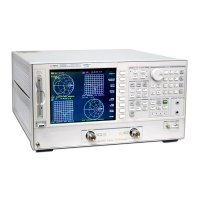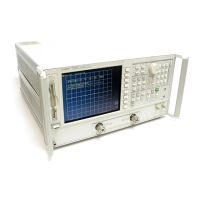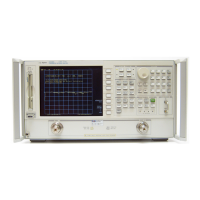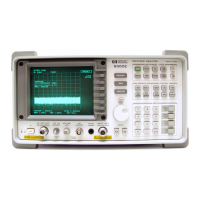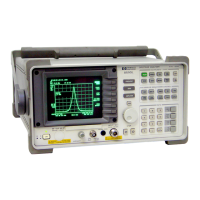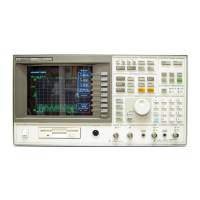5-41
Hardkey/Softkey Reference
Analyzer Functions
while creating a sequence, this softkey inserts a command
to jump to another sequence if the single input selected is
in a high state.
while creating a sequence, this softkey inserts a command
to jump to another sequence if the single input selected is
in a low state.
sets the printer or plotter port to parallel.
toggles the parallel output port between the copy and
GPIO output modes.
allows you to input a number (0 to 255) in base 10, and
outputs it to the bus as binary, when the parallel port is in
GPIO mode.
pauses the sequence so the operator can perform a needed
task, such as changing the DUT, changing the calibration
standard, or other similar task. Press
when ready.
when editing a sequence, appears
when you press . When placed in a
sequence, it presents the menu of up to 6 available
sequences (softkeys containing non-empty sequences). If
the operator selects one of the sequences, that sequence is
executed. Any other key can be used to exit this mode.
This function is not executed if used during modify mode
and does nothing when operated manually. This softkey is
not visible on the display, and the function is not available,
unless programmed into analyzer memory.
selects the number of the pen to plot the data trace. The
default pen for channel 1 is pen number 2, and for channel
2 is pen number 3.
selects the number of the pen to plot the graticule. The
default pen for channel 1 is pen number 1, and for channel
2 is pen number 1.
selects the number of the pen to plot both the markers and
the marker values. The default pen for channel 1 is pen
number 7, and for channel 2 is pen number 7.
selects the number of the pen to plot the memory trace.
The default pen for channel 1 is pen number 5, and for
channel 2 is pen number 6.
selects the number of the pen to plot the text. The default
pen for channel 1 is pen number 7, and for channel 2 is pen
number 7.
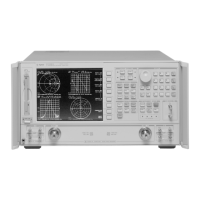
